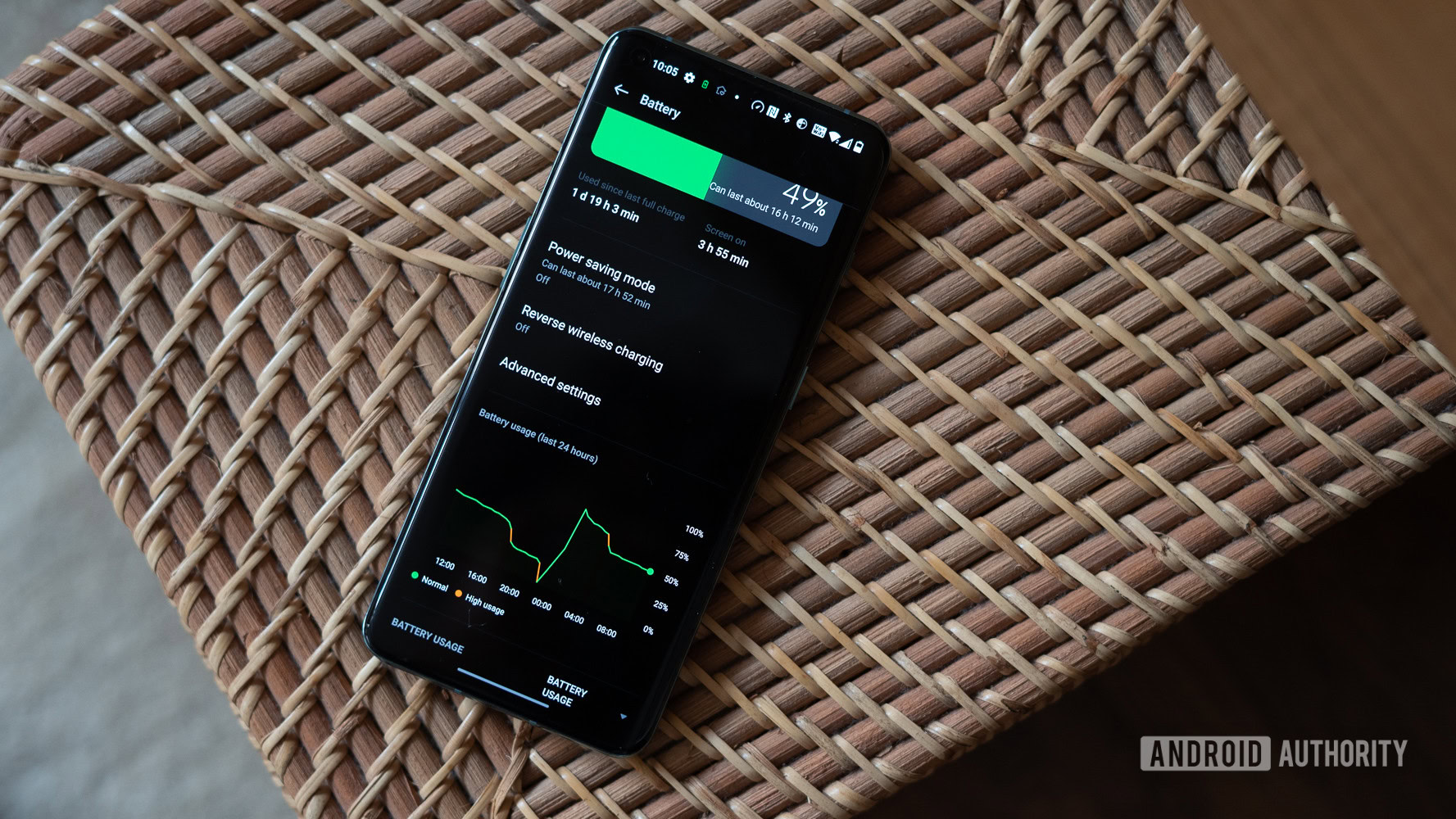OnePlus 10 Pro 80W vs 65W charging test: Do you need that extra 15W?
Dhruv Bhutani / Android Authority
‘Supervooc’ is Oppo’s intellectual property. OnePlus is now adopting Oppo’s branding for its charging technology instead of the previous ‘Warp Charge’ moniker.
According to OnePlus, “80W Supervooc does not currently support 110- or 120-volt AC power — the typical standard for power outlets in [North America].” Of course, it’s not impossible to build an 80W plug that would work with 120 volts, suggesting that Oppo doesn’t see a great cost-to-benefit ratio investing in slightly faster charging for some customers.
OnePlus 10 Pro 80W vs 65W charging tested
OnePlus boasts that its 80W charger fills the handset’s 5,000mah battery in 32 minutes, while the 65W plug takes 34 minutes. Two minutes is virtually a margin of error difference, but do these claims hold up in the real world?
Using the 80W charger, our OnePlus 10 Pro charged up from 1% to 100% in just under OnePlus’ advertised 32 minutes. The battery hit 25% in only 5 minutes and 20 seconds, 50% in 12 minutes and 12 seconds, and 75% in 20 minutes and 18 seconds. By comparison, using the 65W charger takes almost 35 minutes to go to full. The OnePlus 10 Pro also takes less than 5 minutes and 45 seconds to get to the 25% key milestone, under 12 minutes and 25 seconds to 50%, and exactly 21 minutes to 75%, all using the slightly lower power 65W plug.
The 80W plug is constantly fractionally ahead of the 65W model, but only by mere seconds. It’s not until the final 20% of charging or the last 5 minutes that we see daylight between the two on the graph. The likely reason for this is that peak power levels are only sustained for a very short time when the phone is very low on battery. After that, the two models probably consume very similar power levels for the bulk of the charging cycle.
The OnePlus 10 Pro charges virtually just as fast in North America as in Europe and India.
Temperature differences are a far more noticeable metric between the two. Despite starting from a very similar temperature, the 80W charging option is four degrees Celsius warmer than the 65W option for most of the cycle. However, we should note that we tested these phones in two different environments, so ambient temperature may also play a factor.
Our recommendations: Charging habits to maximize your battery life
Either way, these results, much like ones we’ve seen in the past, highlight that additional power has diminishing returns when it comes to battery charging times while placing a more significant strain on the battery and degrading its long-term performance. 15W more power to save a couple of minutes in a full charge cycle and just seconds between key milestones hardly seems worth acknowledging. It all begs the question, why bother with 80W at all? Aside from the marketing prestige, of course.
For all the latest Technology News Click Here
For the latest news and updates, follow us on Google News.

